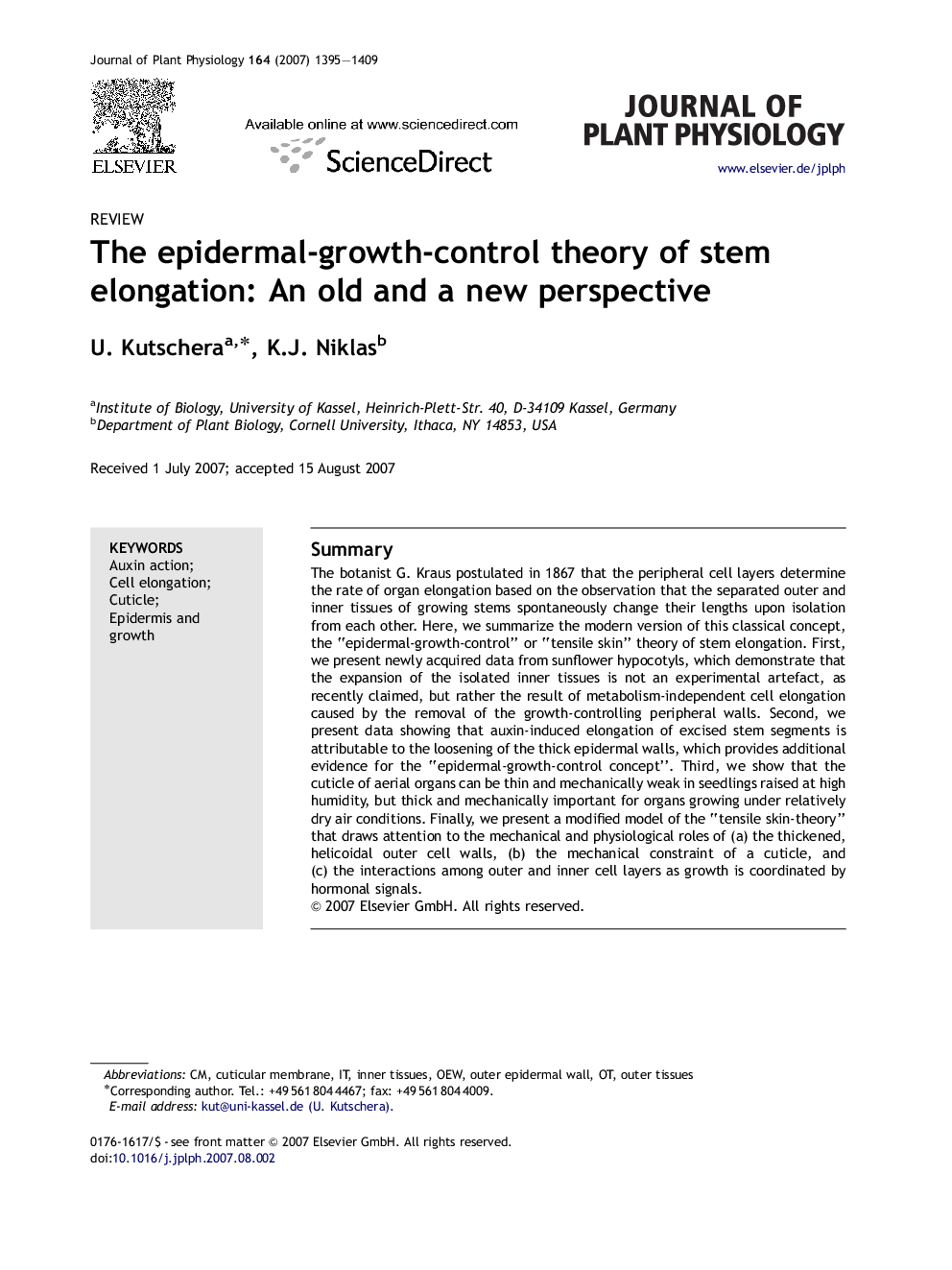| کد مقاله | کد نشریه | سال انتشار | مقاله انگلیسی | نسخه تمام متن |
|---|---|---|---|---|
| 2057666 | 1075909 | 2007 | 15 صفحه PDF | دانلود رایگان |

SummaryThe botanist G. Kraus postulated in 1867 that the peripheral cell layers determine the rate of organ elongation based on the observation that the separated outer and inner tissues of growing stems spontaneously change their lengths upon isolation from each other. Here, we summarize the modern version of this classical concept, the “epidermal-growth-control” or “tensile skin” theory of stem elongation. First, we present newly acquired data from sunflower hypocotyls, which demonstrate that the expansion of the isolated inner tissues is not an experimental artefact, as recently claimed, but rather the result of metabolism-independent cell elongation caused by the removal of the growth-controlling peripheral walls. Second, we present data showing that auxin-induced elongation of excised stem segments is attributable to the loosening of the thick epidermal walls, which provides additional evidence for the “epidermal-growth-control concept”. Third, we show that the cuticle of aerial organs can be thin and mechanically weak in seedlings raised at high humidity, but thick and mechanically important for organs growing under relatively dry air conditions. Finally, we present a modified model of the “tensile skin-theory” that draws attention to the mechanical and physiological roles of (a) the thickened, helicoidal outer cell walls, (b) the mechanical constraint of a cuticle, and (c) the interactions among outer and inner cell layers as growth is coordinated by hormonal signals.
Journal: Journal of Plant Physiology - Volume 164, Issue 11, 9 November 2007, Pages 1395–1409